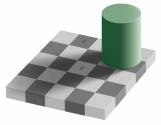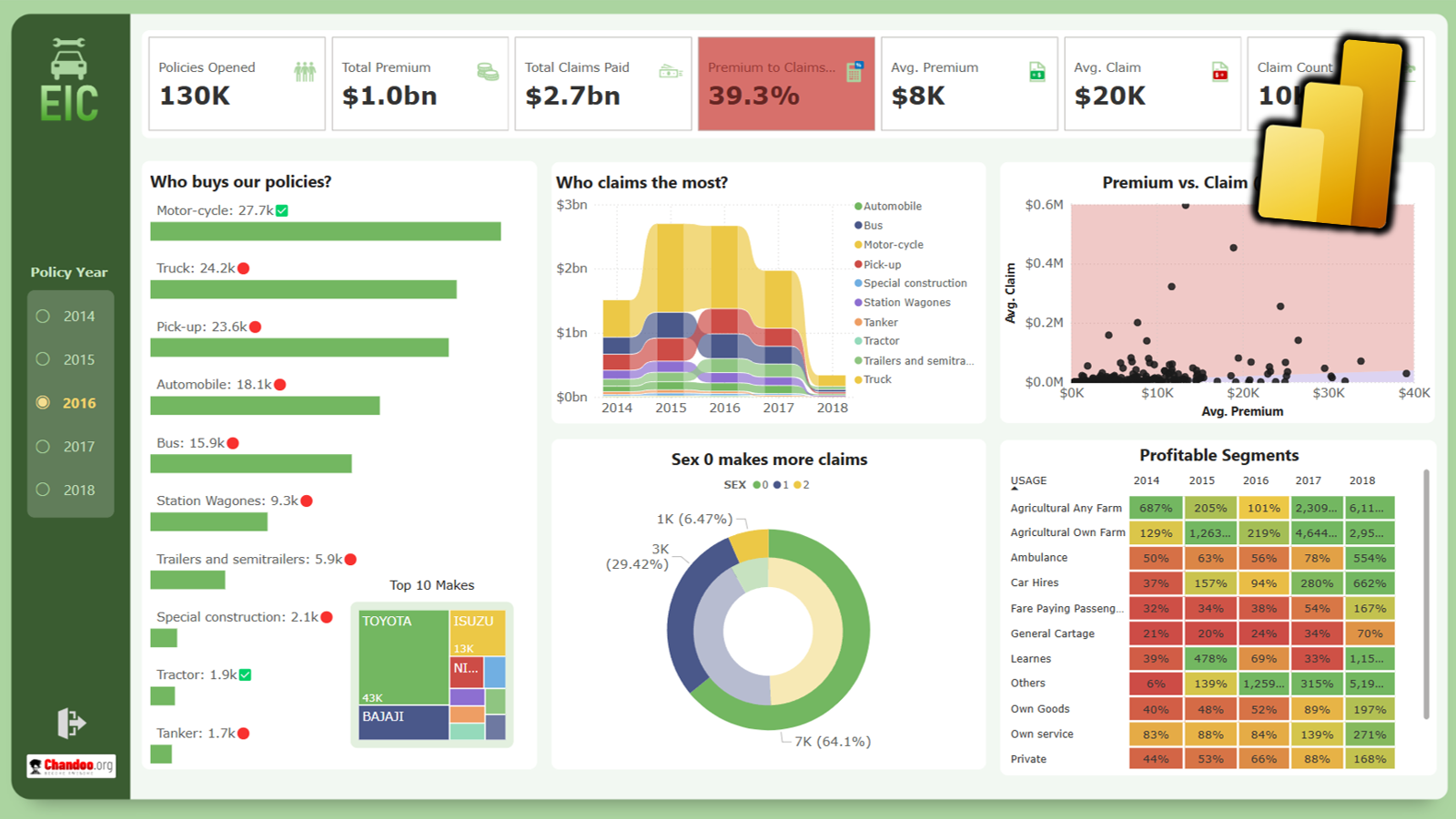The other day while doing aimless roaming on the dotcom alley, I have seen some cool optical illusions. There are so many valuable lessons optical illusions can teach us – chart makers. Don’t believe me? Read on…
We cant measure sizes either
Much has been said about our inability to measure angles. That is why most of the charting gurus recommend you to not use pie charts. But what about sizes? Well, it seems we are bad at measuring them too. Look at this illusion.

Both the orange circles are of same size. As you can see, they don’t look so. I call this a bubble chart illusion.
What can this illusion teach us?
- Use data labels
- When you make a big chart, the neighbors of a data element determine how they are perceived. Avoid this illusion by adjusting axis, rearranging data or using color.
Colors are what we think they are
We talk alot about colors in charting. But when it comes to interpreting colors, our mind is very subjective. Look at this color illusion.

Can you believe both cells A and B are of the same color?
What can this illusion teach us?
- Use fewer colors when possible. Better still use one color.
- When you need to use multiple colors, make them distinct. If you use shades of same color, make sure they are not poorly juxtaposed.
Too much data can create un-necessary patterns
Look at this optical illusion that looks like a stacked bar chart. See how the lines don’t seem parallel.

I am sure some of you would have seen a stacked bar with enough data that looks closely like the above illusion.
What can this illusion teach us?
- If you are plotting too much data on a chart, make sure the chart is readable.
- Dont place chart elements (bars in this case) close to each other, don’t separate them too much either.
Gray color messes with our gray matter
There are just so many optical illusions involving gray color that I don’t know where to begin. See this for eg.

Because of its neither here nor there nature, gray color can easily mess with our mind (and eyes). One reason why excel 2003 and earlier charts looked so ugly is because of the gray color. They had that as default background.
What can this illusion teach us?
- Do not leave your chart’s underwear on – In other words, remove that default gray background from your charts.
- Avoid using close variations of gray when you plot multiple series of data.
No matter what your chart says, your audience will see what they want
You might think your chart proves pattern A. But your audience only see the pattern B. For eg. look at this illusion:

Some people instantly see a flower vase. Others see 2 faces. And this could be true for your charts.
What can this illusion teach us?
- Don’t leave the messages for interpretation. Spell them out if you can.
We over estimate our memory power
Our mind is notoriously forgetful and unlearns things so fast. Don’t trust me? Well, see this animated illusion.

Both yellow lines are of same length. But the moment the guiding lines are removed our mind tends to think first line is smaller than the next one. Add the guiding lines again and our mind quickly learns the fact that they are of same length. Remove it and it is as if we never learned the fact. In this great TED talk, the speaker Dan Ariely talks about the same and asks whether our mind is in complete control of the decisions we make.
What can this illusion teach us?
- Next time you set out to make that 50 slide presentation, remember this: “we are poor at remembering things”
- Use data labels, keep things simple and together if you can.
No one talks about a chart, but everyone talks about an illusion
Well, what can I say. I look at at least a dozen charts everyday. And yet, here I am, talking about optical illusions. That is true for most of us. We like magic, we like wonderful things and want to talk about them. We have seen one too many charts that they don’t excite us anymore. Show me an optical illusion and I am ready to stare at the black dot for 30 seconds. Show me a pie chart and I am yawning already.
What can this teach us?
- Whenever you can, tell a great story.
- Connect with your audience in unusual and exciting ways.
- Break some rules and don’t be shy to add a spark.
Additional charting resources to help you make magic:
- Better excel chart templates – Create great looking charts with these templates
- Vizooalization – What your neighborhood zoo can teach about visualization
- Charting Principles – Simple yet very effective rules to make great charts




















4 Responses to “How windy is Wellington? – Using Power Query to gather wind data from web”
Breaking - Wind jokes at Chandoo
Kiwis sniffing for clues about blog post reason
It's confirmed: Wellington is windier than Uranus.
Acompanhando e aguardando ansiosamente a segunda parte.
[]s.
[Google translate]: Accompanying and eagerly awaiting the second part
hi chandoo,
i've tried using power query, however i face a rather weird problem. when i click on 'from web' option, the URL window does not show option for basic and advanced. thus i'm unable to form parameters in URL. how i can resolve this issue?